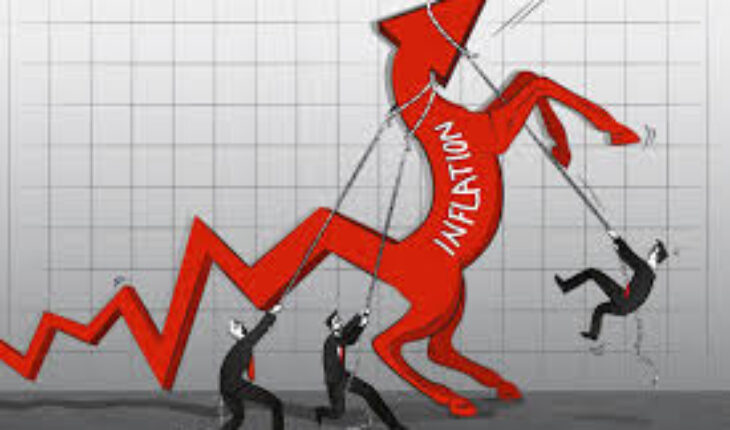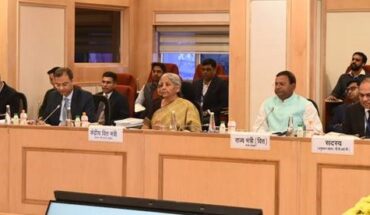Indians must have felt that vegetable prices had not decreased throughout the last winter. Vegetables and fruits are generally more expensive in summer than in winter. India’s internal inflation rate has been anticipated to be 5.4%, which is relatively high, based on the Consumer Price Index (CPI) for the years 2023–2024. It is important to note that different commodities and substances needed in the daily lives of an average person are separated into a total of six components when calculating inflation using the Consumer Price Index.Of these, the variety of foods and drinks utilised for food is the most significant. These items include vegetables, fruits, milk, pulses, spices, sugar, meat and fish, oil etc. In the calculation of Consumer Price Index, which presents the rate of inflation, food and food items have a weightage of about 46 percent in the day-to-day or monthly expenses of a common man. In rural areas, food and food items account for 54 percent of the day-to-day expenses of a common man. Whereas in urban areas, it is 36 percent. The main reason behind this is that the cost of living in a house in urban areas is approximately 22 percent, which is zero in rural areas. Therefore, it is almost always discussed that the inflation rate is controlled by the fluctuations in the price of food items.
The cost of pulses skyrocketed in the most recent fiscal year 2023–2024, which significantly increased the average person’s food budget expenditures and ultimately raised the yearly rate of inflation above 5%. It is also somewhat unexpected that many Indian states—which are also the top producers of pulses—saw quite substantial inflation in their pulse prices. For instance, the prices of pulses rose from 1.9 percent to 21 percent in the most recent year 2023–24 compared to the year 2022–23 in Madhya Pradesh, the state that produces the most pulses. It increased in price by almost 20% in Karnataka, 18% in Maharashtra and Gujarat, and, in Uttar Pradesh and Chhattisgarh by 15 percent.
It is also often heard that India’s economy is always plagued by inflation and unemployment. Although every effort is made to manage them, it is a harsh reality that they are both constantly out of control. Even as the nation emerges from election season, the public’s attention shifts away from economic concerns and towards a variety of other concerns, which seems even more unexpected. If we understand this from the figures, then in four out of the ten states of the third phase of the current central government elections, the inflation rate on the basis of consumer price index is running higher than the inflation rate of the country. Bihar is at the top among these four states, where the inflation rate is 5.84 percent. Then there are Karnataka, Uttar Pradesh and Gujarat where the inflation rate is more than 5.7 percent. In the remaining six states, except Maharashtra, the inflation rate in all has been four percent or less during the year 2023-24. Although this rate is above five percent in Maharashtra, but the average inflation rate of the country is definitely less than 5.4 percent. It is also important to mention here that in all these states, inflation has been recorded to be higher in rural areas which is an indicator of a very dire situation because per capita income in rural areas is much lower than in urban areas.
It is also frequently argued that domestic inflation rises sometimes due to major global upheavals also .When the price of crude oil increased globally due to the war between Russia and Ukraine, the cost of transportation increased due to the increase in the price of petrol and diesel in the domestic market and due to that almost everything became expensive in the Indian market. This also included food items, vegetables and fruits etc. However, during that time there was a double blow of inflation because the cost of petrol and diesel affects financially both directly and indirectly. In this era of globalization, it is justified to be helpless in front of all these things, but when the price of food items, vegetables, pulses etc. increases on the domestic front without any global reasons, then it seems incomprehensible and it is very important to discuss it for its solution. However, governments focus on all these through a social welfare scheme, under which on one hand, if we talk about the lives of farmers, then increasing the price of MSP and purchasing the crop with guarantee etc. are also included. On the other hand, distributing food grains to the poor for free is also commendable. But it is also very important to understand that all these are not permanent options to control inflation.
In the context of India, it has also been observed that the previous fiscal year saw significant setbacks in the agriculture sector as a result of climate change, leading to somewhat lower agricultural output. Subsequently, on the home front, restrictions were placed on both the export of agricultural products and their ability to be stored in order to maintain the control of food prices. As a result of all of this, India’s agricultural exports were worth roughly 15 billion US dollars in 2022–2023 but were extremely low in the most recent fiscal year.
It is also important to note that in order to curb inflation, everyone is looking on the RBI to cut interest rates, which will allow society to regulate the Indian Rupee’s liquidity. The average person’s purchasing power declines and financial loans become more expensive, even though this has no direct impact on inflation. However, the higher cost of bank loans also reduces a company’s ability to expand, which results in a negligible gain in employment possibilities. In addition to all of this, it is a fact of the modern world that the Central Bank of India cannot make any kind of judgement without considering the circumstances across the world.For instance, the likelihood of a rate cut in India appears remote if the US Federal Reserve does not. In addition, the prospect of changes in the world market price of crude oil adds to the uncertainty. Consequently, it’s important to recognise that inflation is a problem whose solution the nation’s economic policies fail to recognise and instead attempt to overlook by treating it as a normal part of daily life.
Dr P S Vohra is Writer, columnist and financial thinker, View are personal





